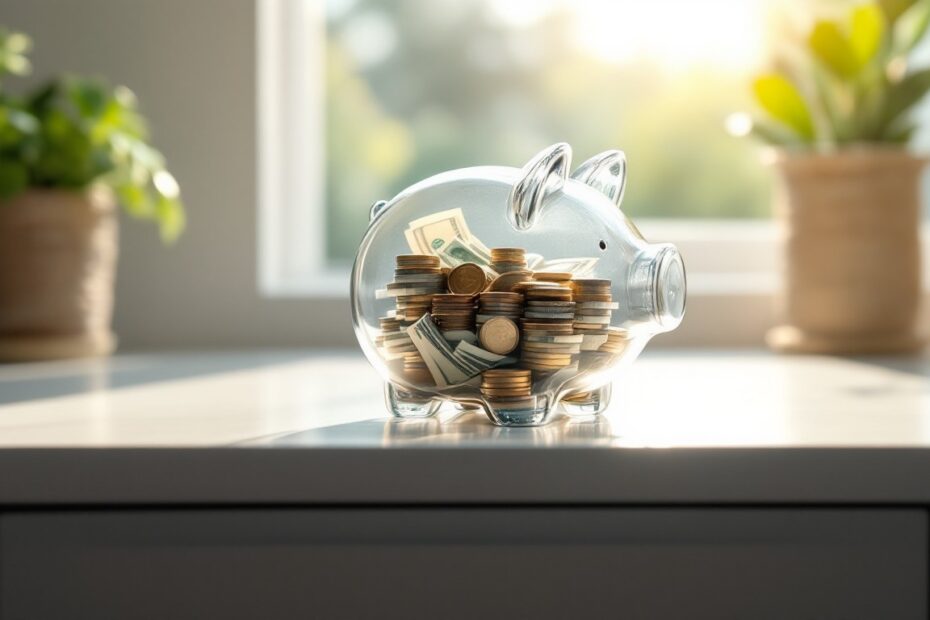💬 Meta description:
Learn how much to save in your emergency fund and where to invest it safely with liquidity and profitability. Protect your financial future!
How to Build and Invest Your Emergency Fund
Introduction 📌
Unexpected events happen — job loss, health issues, urgent repairs…
And when you’re unprepared, the financial impact can be devastating.
That’s why every financially healthy person needs an emergency fund.
It’s your shield against unpleasant surprises — and the first step toward financial stability.
In this Dicas de Bolso guide, you’ll learn:
-
What an emergency fund is
-
How much you should ideally save
-
Where to invest to keep it safe and accessible
-
Common mistakes when building your fund
What Is an Emergency Fund? 💡
An emergency fund is money set aside to cover unexpected expenses or income drops without needing loans or credit cards.
It’s the foundation of good financial planning. Before aiming for profit, you need protection.
How Much Should You Save? 📊
Financial educators usually recommend:
✅ Between 3 to 6 months of your monthly living expenses
-
If you have a stable job and few dependents, 3 months might suffice
-
If you’re self-employed, a business owner, or have dependents, aim for 6 months or more
📌 Example:
If your monthly cost is R$3,000, your fund should be between R$9,000 and R$18,000.
Where to Invest Your Emergency Fund? 🏦
The priority is not high returns, but:
-
Safety: your money should not fluctuate
-
Liquidity: must be available for immediate withdrawal
-
Real profitability (at least above inflation)
1. Tesouro Selic (LFT) 🥇
-
✅ Safety: backed by the National Treasury
-
✅ Liquidity: redemption in 1 business day
-
✅ Ideal for funds over R$5,000
-
📌 Invest via platforms like Tesouro Direto, NuInvest, XP, Rico
2. CDB with Daily Liquidity 🥈
-
✅ Yields a percentage of the CDI (look for above 100%)
-
✅ Covered by FGC up to R$250k per institution
-
✅ Available at digital banks and brokerages
-
📌 Example: CDB at 103% of CDI with daily liquidity
3. Digital Bank Remunerated Accounts 🥉
-
✅ Practical for smaller amounts
-
✅ Immediate liquidity
-
🚨 Beware: not all pay 100% of the CDI
-
📌 Examples: Nubank, Inter, PicPay, Banco Neon
What to Avoid 🚫
-
Stocks, cryptocurrencies, or volatile funds
-
Real estate funds (FIIs)
-
Fixed income with low liquidity (e.g., CDBs maturing in 2 years)
How to Build Your Emergency Fund Step by Step 📐
-
Calculate your fixed monthly costs
Include: housing, food, transport, health, essential bills
📌 Tip: use apps like Mobills, Organizze, or Google Sheets -
Set your target amount (3 to 6 months)
If costs are R$4,000/month, aim for R$12,000 to R$24,000 -
Establish monthly savings goals
You don’t need to build the fund all at once — start with what you can and contribute monthly
💡 Example: save R$500/month → after 1 year, you’ll have R$6,000 -
Invest safely and track progress
Prefer Tesouro Selic or CDBs with daily liquidity
Make sure returns at least match CDI
Avoid touching the fund unless truly necessary
Benefits of Having an Emergency Fund 🧠
✅ Avoid debt during crises
✅ Ensure peace of mind in unstable times
✅ Freedom to make decisions calmly
✅ The base for safer future investments
Common Mistakes ⚠️
🚫 Putting money in risky investments
🚫 Thinking credit cards are a reserve
🚫 Using FGTS as emergency fund
🚫 Not adjusting the fund’s value over time
Conclusion ✅
Your emergency fund is the foundation of your financial security.
Without it, any surprise can turn into chaos. With it, you live more calmly, confidently, and ready to invest in your future.
Start today, even with small amounts. The key is to build the habit and stay consistent.

Hello, my name is Ava Brow, I’m 20 years old, and the purpose of creating this website is to work with AdSense and also to help solve everyday problems people face. My main goal is to provide solutions based on my knowledge to address the challenges of my audience.
